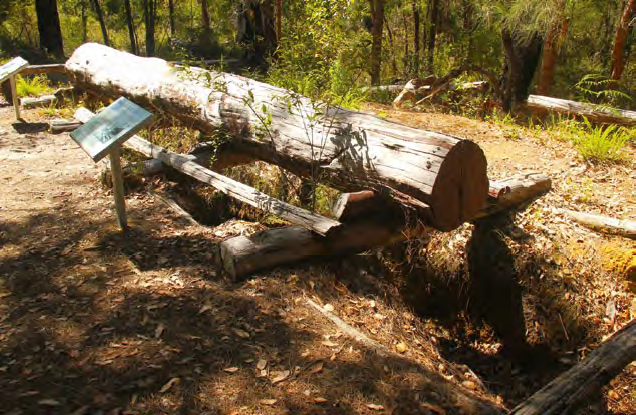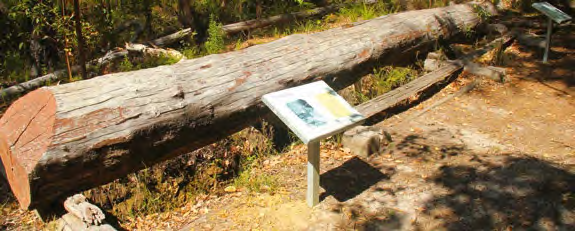
Dog Rock, Albany
In the southwest corner of Western Australia, the town of Albany was first settled by Europeans in 1826, some two years before Perth. The centre is well recognised for its fabulous coastal scenery, its history of the ANZAC’s departure from King George Sound for Gallipoli in World War I, and as the location of Australia’s last whaling centre to close.
Probably an equally well known icon of Albany is its very own Dog Rock.
Standing not far from the centre of town on the verge in Middleton Road, Dog Rock is in fact only the tip of a large underground granite boulder which, protruding through the surface here, bears a remarkable similarity to a dog’s head – like a labrador sniffing the air. With a distinctive collar painted around its base, this well-loved canine head is one of the most photographed landmarks around the town. Not well known, however, is the story often told of how this famous town icon began.
The legend goes that the rock was created when some early settlers back in the 1800s returned home one day to find their daughter and her dog, Victor, surrounded by a group of naked Aborigines who were looking at her in curiosity – the first white child they had ever seen. They meant no harm, but the child’s mother was understandably concerned and Victor, sharing her apprehension, darted towards the Aborigines barking furiously. As they turned and ran away the Aborigines threw spears at the dog, killing him.
Victor was buried here that night on the slope of the hillside. During the night a fierce storm with torrential rain rolled in from the sea, and in the morning the dog’s grave had disappeared, apparently washed away. In its place, however, a huge rock had arisen through the soil – an everlasting monument to the dog and his devotion to the young girl who owned him.
Dog Rock in Albany is not just a rock but a legend in its own right! Dog Rock is located on Middleton Road and can be reached in a two or three minute walk from Albany town centre.
Top Dog or Underdog
We have all heard of the term ‘top dog’. This is generally a name given to the leader, the boss, chief of a group, the person with the highest rank, etc.
Likewise we all all familiar with the term underdog. This is generally a name given to the person, or perhaps the team that is losing or likely to lose, a person who is a victim of injustice or being discriminated against.
It is likely that we have all, at some stage in our lives, enjoyed (or otherwise) being a top dog or underdog on some occasion - even just for a few moments! However, have you ever wondered where these terms came from?
I recently (quite unintentionally) may have found the answer while travelling through tall timber country, just 120 kilometres from Albany’s Dog Rock. A small signpost beside the road at Rest Point near Walpole, pointed towards an old fashioned saw pit used by early loggers to laboriously saw, by hand, through large logs to make them easier to transport. This pit, dated around 1860-1865, is at the end of a 300 metre walking trail off the road into a tall timber karri forest.
To carry out the tiresome work involved here, a pit was dug in the ground and large logs rolled (one at a time) into position over it. The location of the saw pit was usually chosen downhill from where trees were being felled so that the logs could be more easily rolled down the slope into position over it. Using a long hand saw (often over two metres in length) one man would stand on top of the log and another in the pit below the log. With a lifting/pushing-up-and-down motion from their top and bottom positions, the men (one on each end of the saw) would laboriously saw through the logs.
As can easily be imagined, the man on top working above ground in the open air had far better working conditions than the man in the saw pit under the log. This poor devil, working in the confines of a dug out pit with little air movement, would be continuously covered in falling saw dust as well as small pieces of timber and bark dropping on him from above. In addition, tall timber usually grows in high rainfall regions and this being the case, the saw pit itself was often damp and muddy and sometimes the man underneath would be standing in water to do his job. Before the advent of safety glasses, hard hats, and ear muffs, the pit man would have saw dust, etc. in his eyes, nose, ears, face and hair, and in the hot steamy conditions down there the sweat and humidity would have simply added to his woes.

Rest Point Saw Pit, Walpole, Nornalup National Park
Meanwhile, up on top, the top dog’s job was simply to ensure the saw is raised to the right height for each cut and that the cut line of the saw is straight and true – clearly a much more appealing job than the poor underdog working in terrible conditions below!

Category: Destinations
Written: Mon 01 July 2013
Printed: July, 2013
Published By: